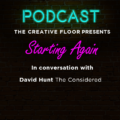SXSW is a melting pot of industries, music mixes with health, which in turn blends into technology and gaming. Every year, this unique collision of expertise gives birth to new thinking, new trends and a new view of the world tomorrow. This year, I was lucky enough to attend with Havas Lynx and experience the forefront thinking across industries. From hundreds of talks and thousands of articles, I have condensed down SXSW 2017 into three areas: AI, VR and gaming to look at the hype, the highlights and what this all means for healthcare.
Is Artificial Intelligence taking over the world?
The Hype:
Machine learning was everywhere you turned at South by. Whether it was AI directing films, creating music or being your next personal trainer, you name it, someone talked about AI doing it. As you might imagine, it was all too easy to create a world, run by AI, where we, mere humans, sit back, relax and enjoy our endless leisure time. The Sci-Fi author, Bruce Sterling, gave a more refreshing view on AI, however. He compared AI to technology fifteen years ago. Not so long ago technology and automation were revered as the replacement of human labour. Instead, it just spawned different lines of work. Developers became a thing, digital marketing was born, and UX designers matured. His take, is that AI will have the same effect. It may change the landscape, but wherever there is AI, you need someone to ‘quarterback’ the technology. Looks like I will have to put down the G&T and get back to work.
The other big barrier for AI currently is linguistics. Language processing is not even close to the level of sophistication required to fulfil its promise. We can expect to see huge research and advances in this area over the next couple of years.
The Highlights:
There were plenty of highlights around AI, but for me, a real highlight was a panel between Alexa, Samsung SmartThings and Sonos, not least because it was the human form of my living room. What is important as we try to realise some of the opportunities AI presents, is partnership. We need data interoperability and collaboration across industries to facilitate better integration of machine learning into our daily lives. Realistically, artificial intelligence is nothing without vast and fertile datasets.
An omission from this panel, and across most AI talks I attended, was emotional intelligence; what happens when we develop machines with a conscious? Perhaps that is one to look out for next year at SXSW. The panel did however, consider secondary responsibility, i.e. if I give my authority to a machine and that in turn commits a crime, who is responsible?
So, what does this mean for healthcare?
Well, I split the AI opportunities into two for healthcare:
- 1. Patterns
Without doubt, AI improves our ability to crunch data, spot patterns and make recommendations. IBM Watson continues to prove this. And as we get smarter with our data harvesting, this will only improve. This means, earlier diagnosis, better clinical decisions and hopefully improved clinical outcomes.
- 2. Intelligent living
An area I had thought less about was ‘at home’ care. With the advent of conversation interfaces and greater accessibility to Smart Home devices, a new wave of remote digital care is possible. Whether this is rehab, behavioural coaching, dementia care, CBT/psychological therapy, disease education or device instructions, the possibilities are incredibly interesting. Every day in hospital costs an estimated £4001; I would love to see the use of intelligent living to help get people out of hospital sooner, and cared for in the comfort of their own home.
Will we all live in Virtual Reality?
The Hype:
VR was very prominent across all of the event tracks: health, tech, film, music and gaming. However, a fundamental challenge with VR is that it can be quite isolating. The headset does not just immerse you as the end user, but it also acts as a barrier between you and the outside world. Mixed reality seems to be one way to help maintain a connection with the outside world, but flip that around and what happens when you are connecting with people inside the virtual world instead? Could virtual hangouts replace real-world meet-ups? An interesting concept discussed at SXSW, was the use of hand controls to enable the users to demonstrate body language in a virtual connection, propelling online connections into a much more realistic space.
The Highlights:
A real highlight was the Virtual Cinema, a space crammed with different VR experiences from the likes of NASA and Oculus. The exhibition itself was phenomenally popular, and it is this fascination with VR that really underpins the opportunity to build brand equity and share of voice. Throughout the exhibition, there was a mix in types of experiences (passive, passive-ambient and interactive), graphics and audience engagement. From across the different set-ups, my highlights/top tips are:
Engage the audience: Without doubt, the experiences that were projecting the VR experience drew greater crowds and excitement. The difficulty with any VR experience is that it can be very isolating and individual-focused, by bringing the crowd into the interaction (even passively) helped grow the reach and impact of VR substantially.
Use your hands: Although having a range of different levels of engagement is beneficial, when it comes to involvement and prolonged engagement, the experiences that integrated hand-held controllers managed better than those where the user simply sat viewing the experience.
Graphics matter: Currently, anything in VR is cool and interesting, but the spectrum of graphics was evident and it was not hard to see that we will soon be comparing today’s VR experiences with the likes of first generation gaming graphics. As an experience, those that had invested in high-end graphics managed to propel the experience from ‘cool’ to ‘impactful’.
Sound is fundamental: The quality and application of sound was a real revelation. Most experiences had simple background sounds, but with a more sophisticated approach, the immersion into VR could be phenomenal – this is especially true as VR headsets are looking to integrate headphones. The psychological power of sound (built through sound effects, score, dialogue, spatial variance and sonic storytelling) is relatively unexplored in health but has huge potential to not just build a better UX, but also actually help drive greater uptake, emotional response and behavioural change. In another talk, the panel explored the link between sound and emotion, looking at how audio can actually override your visual experience and perception of film/VR. In more immersive experiences especially, audio has a real playfulness in how you interact with the story and the more traditional approach of simply overlaying a soundtrack or sound score onto a video is fatigued and predictable. The panel explored how subtle sound nuances can transport you as a viewer into the experience, so you can explore the narrative from inside the story itself. To see what this can look like; check out this (360 layout) video here.
Group learning: With clear ‘gamification’ and ‘behavioural economics’ benefits, the idea of group interaction within the VR world was a really interesting angle that holds huge opportunity. This format instantly takes the experience away from isolated engagement and helps drive greater reach and effectiveness.
So, what does this mean for healthcare?
For health, virtual connection holds potentially a very useful application. Along with already proven applications, such as distraction techniques, psychological well-being treatment and immersive content for educational purposes, there is also application in ‘virtual connection’. Some conditions, either physically or psychologically leave people feeling isolated and disconnected from the outside world. Opening up the opportunity of exploring virtual worlds, connecting with others with the same conditions could help drive a better sense of connection and community. Additionally, the ‘virtual’ nature of these worlds acts as platform for people who suffer from forms of social anxiety. Where autism may act as a barrier to social contact in the real world, could it be displaced in the virtual world?
However, a vital area is accessibility. Through Siri and smartphones particularly, the technology world has opened up huge potential for various different patients, particularly those with visual impairments. However, with VR, the experience is built on visual and audio, so the question remains as to how we can adapt VR to overcome all accessibility barriers.
Gaming for good
The Hype:
Tucked amongst Mortal Kombat and the latest in gaming consoles, was a company called Blue Goji, who specialise in the development of games to improve health. Between VR headsets and digital games linked to spin bikes, the company uses FunTech to encourage people to move and live better, healthier lifestyles. Since the advent of the Wii consoles and XBOX Kinect, the link between gaming and health has been much more direct.
The Highlights:
You only have to look at Pokémon Go to know that gaming can do an incredible job at driving repeat engagement and positive health. However, over the last few years, we have focused more on ‘gamification’ than actual ‘gaming’. But, at least in SXSW, gaming was back in fashion. As technology and especially gaming technology advances, we could be entering a world where you end up working out, without even knowing it.
So, what does this mean for healthcare?
Linked to my earlier conclusion around VR, where this kind of technology becomes fascinating, I believe, is in rehab situations. Every day and hour spent in hospital comes at an extraordinary cost, and so the question of whether gaming exercises could be used, not just to help people stay out of hospital, but to actually be discharged from hospital quicker, is an interesting one. This could be post-operation, post-accident or even long-term physiotherapy. With advancements in technology allowing you to track movements, and the very nature of gaming playing well to behavioural change and longevity/sustainability of engagement, there could be potential in this area.
Wrapping up on SXSW
South by posed some intriguing questions and gave a purposefully exaggerated look at the future. The thought of how machine learning, VR, gaming, audio and art could change the healthcare paradigm of tomorrow is an exciting one. For now, the challenge remains not in the development of technology, but in the sustainable application of it – considering cost, behaviour and accessibility. I look forward to putting some of the learnings into practice.
Please feel to reach out and connect with me via: @Knapp_ster and Medium.
References:
UK Government. Available: https://data.gov.uk/data-request/nhs-hospital-stay










